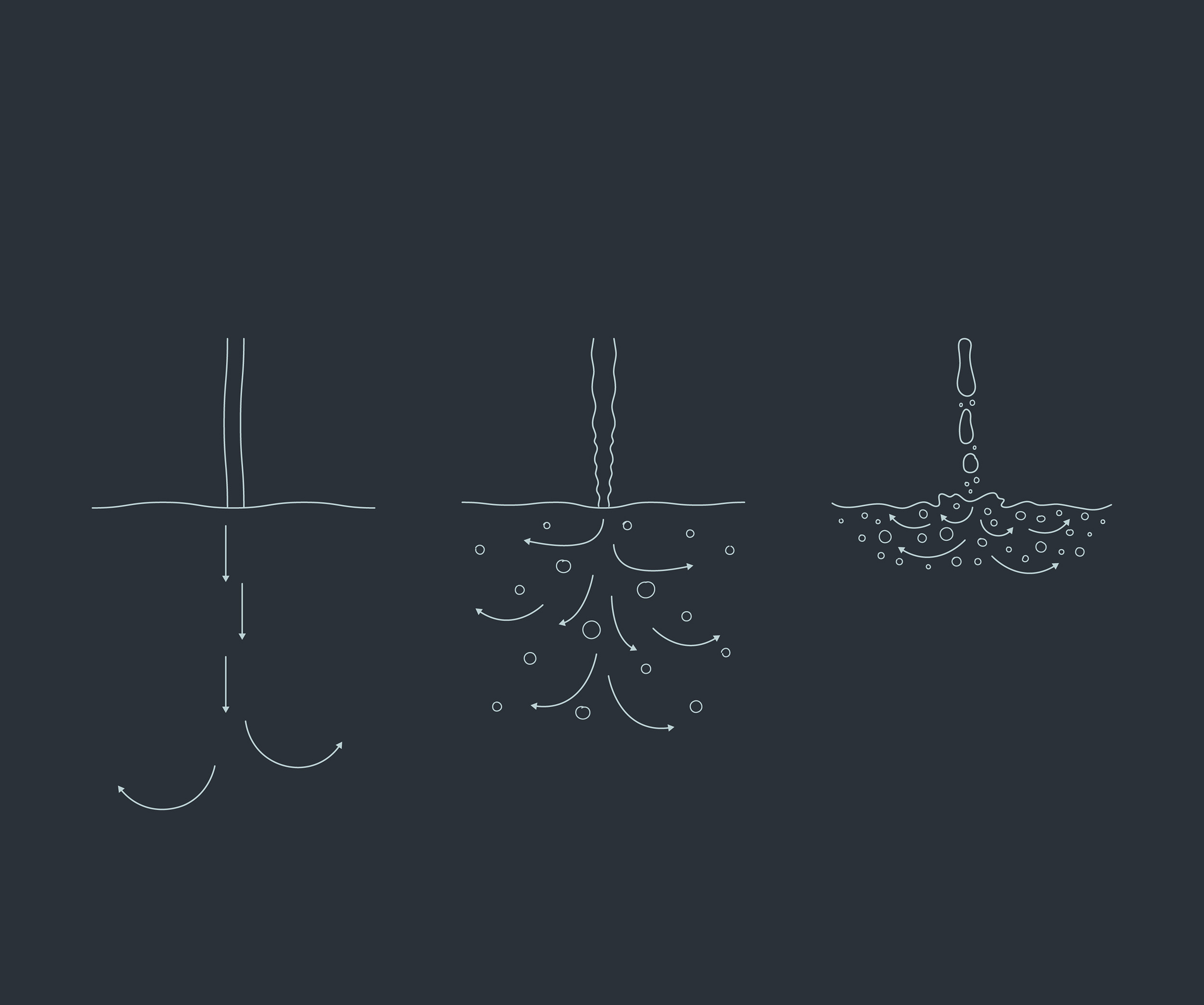by Jessica Sartiani & Tom Hopkinson
Most methods for brewing pour over coffee include pouring in circles or spirals across the coffee bed, intended to ensure that all of the coffee surface gets a similar treatment. While methods that involve only pouring in the center have had some success in competition, and we believe it’s possible to achieve good results with both approaches, some form of circular or spiral pour remains the most common recommendation.
When a barista, learning to brew pour-over coffee, tries circular pours for the first time, the likely result is that the kettle moves up and down as well as in circles. This “yo-yo” action in the pour is a natural movement caused by the arm pivoting around the shoulder, and it takes a bit of training and practice to pour in circles at a steady height.
Plenty of barista trainers recommend pouring from a constant height, and it seems logical that this would ensure that all parts of the coffee bed get the same treatment. But how harmful is this yo-yo pour? To find out, we ran a few experiments to see how the yo-yo pour, and the overall pour height, affected our brews.
We expected to see some evidence that the yo-yo pour would harm the brew, either causing lower extraction, or some evidence in the cup of uneven extraction. However, we didn’t find that the yo-yo pour affected the brew very much — instead, controlling the overall brew height seems to have a much bigger effect on the extraction, drawdown time, and flavour of the brew.
Before we get into the details, though, we need to explain the theory behind the importance of pour height, which prompted us to undertake this experiment.
The Physics of Kettle Streams
Last year, we published “The Physics of Kettle Streams”, a white paper by Jonathan Gagne that explores what happens when the water leaves the spout of a pouring kettle. In this paper, Jonathan describes how the stream of water transitions from a smooth cylinder of water to a string of droplets as it falls. The distance that the stream has to fall before splitting up into droplets is called the ‘breakup length’.
To understand how this might affect the brew, Jonathan used research from a similar scenario in chemical engineering called a plunging jet reactor. This type of reactor uses a stream of liquid pumped into a chamber to help mix the reactants together — similar to the way the flow of water from the kettle can agitate the coffee bed. This research shows that as a stream of liquid starts to break up, it carries air bubbles with it into the liquid.
The air bubbles are dragged into the liquid, but then float back to the surface against the direction of the flow of water. This creates turbulent flow that helps with agitation. If there are too many bubbles, then the flow of water can’t get very far as the bubbles resist the downward flow of water. If there are not enough bubbles, then the stream can flow deep into the bed, but the flow remains laminar, so is less effective for agitation.
 The effect of the stream breaking up on agitation in a pour-over.
The effect of the stream breaking up on agitation in a pour-over.Jonathan suggests that the same thing happens during a pour over brew. If you pour from too close to the surface, then the stream is smooth and water flows deep into the خليط القهوة but remains laminar. The laminar flow is less effective for agitation of the خليط القهوة, and can dig holes in the coffee bed, resulting in تكوين القنوات. If you pour from too far away, on the other hand, the droplets drag in a lot of bubbles with them, which block the water from flowing downwards, preventing the الاضطراب from reaching deeper into the خليط القهوة.
The ideal situation is somewhere in the middle, where the stream has broken up enough to start سحب in bubbles, but not so many that they prevent الاضطراب from reaching the coffee bed. Jonathan’s experiments suggest the ideal distance to pour from seems to be just below the breakup length.
Exactly where the breakup length lies depends on the flow rate of the water, and the design of the kettle that you use. To find the breakup length, increase the height of your pour until you hear a “splattering” sound — which is the sound of individual droplets hitting the water.



0 تعليق